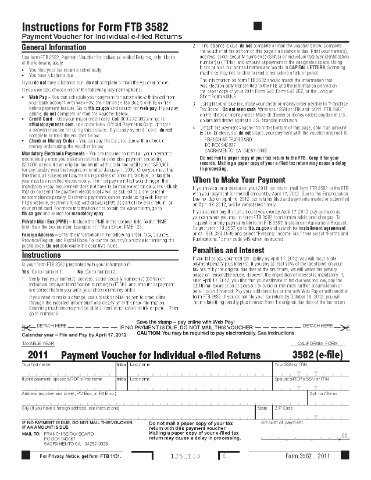Contents:


This disadvantage is the tradeoff for the financial benefits that you receive with this status. If you want to have a say in the direction of the company, then this investment choice is not your best option. Although it would take a significant investment to have a controlling share of common stock, some investors would prefer that kind of moneymaking venture – and preferred stock cannot provide it. An investor who wants to diversify their portfolio and is looking for fixed income investments might want to consider buying preferred stocks. Because they act closer to how bonds work, some experts consider preferred stock a lesser risk investment than common stock.
For example, suppose a company is worried that borrowing more will cause credit rating agencies to downgrade its bonds, which will raise its borrowing costs. By issuing preferred stock, the company can raise capital while lowering its debt-to-capital ratio and supporting or even improving the strength of its overall balance sheet. Such shareholders will always get the fixed dividend irrespective of the profit earned during the year. In contrast, other stockholders will get the dividend payment per the company’s profits. Both types of stocks have their advantages and disadvantages.Investing in both types can help you capitalize on their unique opportunities. Plus, having a diverse portfolio can supplement your bank account.

In the case of common shares, the dividend payment is optional. Typically, only if the total sum of dividends by ordinary shareholders exceeds a preset per-share number would this additional payment be handed out. The issuing company is obligated to pay fixed dividends to preferred stockholders. Unlike common stockholders that can vote in the decision-making processes of the company, issuing preferred stock aids the company owners to have full control of the company.
Non-Participating Preferred Stock
JSI and Jiko Bank are not affiliated with Public Holdings, Inc. (“Public”) or any of its subsidiaries. None of these entities provide legal, tax, or accounting advice. You should consult your legal, tax, or financial advisors before making any financial decisions. This material is not intended as a recommendation, offer, or solicitation to purchase or sell securities, open a brokerage account, or engage in any investment strategy. If you are thinking about buying preferred stock, the first thing to do is look at the preferred stock rating.
Occidental CEO says stock buybacks take priority over production … – Seeking Alpha
Occidental CEO says stock buybacks take priority over production ….
Posted: Mon, 06 Feb 2023 08:00:00 GMT [source]
Thus another way to think about the capital stack is how risky an income investment is. Participatory shares have a fixed dividend but also allow the shareholder to participate in certain financial events by the issuing company. If the company has a good year, participatory shareholders can partake in above-normal dividend payments. Cumulative shares include a clause to protect the investor against downturns in company profits.
If any purchase journal are left over, payouts then go to preferred stockholders. The last in line, common investors, sometimes receive little to no insolvency assets. Participatory preferred shares give extra rights to the preferred shareholders.
Growth and volatility
Bond investors hold a debt obligation on a company, which means they have a right to collect interest during its term and a return equal to the original principal investment once the bond reaches maturity. The bond represents an investor’s claim on the assets of a company in the case of a default or bankruptcy. Unlike bonds where a company risks defaulting if payments are missed, preferred dividend payments can be withheld by the issuing company without facing default risk. Traditional corporate bonds often produce higher yields thank preferred stocks, however.
These stocks are less liquid than regular common stocks, which means it can be harder to sell them when you need to. If you purchase one of these shares, you will receive $0.50 in dividends every quarter, regardless of the company’s financial condition. If your broker does not offer participating preferred stock, you will need to find someone who specializes in them. In 2021, the average price of a participating preferred stock was $1,034.72, while the average price of a regular preferred stock was $882.14. Second, they offer a higher degree of protection than regular preferred stocks.
Common stock and preferred stock are the two types of stock that are most often issued by publicly traded companies and they each come with their own set of pros and cons. Here, we’ll look at each type and examine their strengths and weaknesses. Consider talking to a financial advisor about whether preferred stocks or common stocks make sense for your portfolio, based on your goals and risk tolerance. If you don’t have a financial advisor yet, SmartAsset’s financial advisor matching tool can help with finding one. You can get personalized recommendations for professional advisors in your local area. All it takes is answering a few brief questions to find your advisor match.
These stockholders cannot claim dividends in the middle of the year. They are not allowed interim dividends; they are only paid yearly. The biggest disadvantage is that they don’t enjoy voting rights compared to other stockholders. LiquidationLiquidation is the process of winding up a business or a segment of the business by selling off its assets. The amount realized by this is used to pay off the creditors and all other liabilities of the business in a specific order. These stockholders are privileged to get the dividends before any other company stockholder.
Motley Fool Investing Philosophy
Certain types of preferred stock are mentioned explicitly in the tax code. Thus, dividends earned on these shares are taxed significantly lower than ordinary income. Preferred shareholders receive priority interest and dividend payments. Priority payments virtually guarantee higher coupon payments until the company encounters cash flow difficulties and is bankrupt. On the other hand, common stocks could provide greater returns in the long run, but they have smaller dividends and are often riskier. Common stockholders only receive dividends from the company’s earnings, meaning that they would receive dividends if the company were profitable.
- Nonetheless, a business may have a clause on certain stocks that enables the issuers or investors to compel the issuance.
- As with bonds, the price of a preferred stock moves in the opposite direction of interest rates.
- Adjustable-rate preferred share is a type of preferred share that pays dividends varies because it is linked to a specified benchmark, for example, interest on T-bill.
- The redemption price may be slightly higher or equal to the original issue price.
In general, the risk level of preferred shares is between ordinary shares and bonds. Common stock has the highest risk, and bonds have the lowest risk. Preferred stock is called hybrid security because it has the characteristics of a combination of ordinary shares and bonds. Ordinary shares do not receive a dividend regularly, and their price depends on the growth rate of dividends . The high dividends and lower market risk of preferred stock ETFs may appeal to risk-averse investors, more so than stocks. And so, if the stock of a company is following generally, the preferred stock will also fall.
Best Recession-Proof Dividend Stocks for a 2023 Downturn
They also have an ownership stake in the company even though they cannot vote on the decisions of the company. When you purchase preferred shares, the liquidation value of the asset is known immediately. That means you have an idea of what the worst-case scenario will be if the organization goes through an unrecoverable problem. Although you won’t receive the entire investment back in this situation except in rare circumstances, there is still money returning to your pocket. This advantage applies whether it has a term or preferred life to it.
Skip Reaves Utility Income Fund: Two Better Big-Dividend CEFs – Seeking Alpha
Skip Reaves Utility Income Fund: Two Better Big-Dividend CEFs.
Posted: Sat, 13 Aug 2022 07:00:00 GMT [source]
Like bonds, preferred stocks have a credit rating that can help you figure out if you should buy the stock or not. With Public Premium you can get access to extra data about a company, including its credit rating and earnings reports, to help you figure out if a stock is the right investment for you. However, preferred stock has less price appreciation potential and has little or no voting rights. Preferred shareholders do not get a say in company decisions like mergers, stock splits, or other corporate events.
The share capital is gotten from the shares’ par value while the paid-up capital is any excess paid alongside the stock par value. This capital is useful for financing various operational and developmental activities of the company. Once you’ve identified the security you’re interested in buying, you can place a trade order for the number of shares you’d like to purchase. Not all companies offer preferred stock, so be sure to check what’s available through your broker.
Stockholders could also influence other key decisions to a company’s profitability. But at the same time, the shares are callable past September 1, 2019. This means that JPMorgan has the right to buy each share back at the par value of $25 per share, 3.7% below the current share price. Most notably, other than Treasury Inflation Protected Securities, or TIPs, bonds have no inflation protection. Their interest payments are fixed and they typically offer lower yields due to their reduced risk of capital loss. In addition, due to their fixed payments bonds have the highest interest rate sensitivity, meaning their value can rise or fall significantly based on interest rates.
Nonetheless, a business may have a clause on certain stocks that enables the issuers or investors to compel the issuance. Preferred shareholders can buy common stocks at a predefined price. So if the stock price increases in the market, then preferred shareholders can convert their preferred shares into common shares and enjoy the price rise. Can be purchased back by the issuer at par value — par value being the per-share value assigned by the company issuing the shares — after a set hold period.
So, once a struggling business finally rebounds and is back in the black, those unpaid dividends are remitted to preferred shareholders before any dividends can be paid to common shareholders. While investing in preferred shares is generally considered a safe bet, it has disadvantages. Investors and issuers should always get professional legal advice if you need help determining how preferred stocks will impact your specific situation.
- A friend told her about a profitable local company, Harry’s Hardware Hut, that has cumulative preferred stock.
- Once you have determined how much stock to buy, you can place an order on the app.
- Even though these dividend payments are a promise, they aren’t usually on time.
- Preferred stockholders don’t have voting rights since they face less risk than common stockholders.
- Those with lower risk may not make decisions in the company’s best interests.
I am adept at reviewing, drafting, negotiating and generally overseeing policies, procedures, handbooks, corporate documents, and contracts. I have a proven track record of leading domestic and international companies by ensuring they are functioning in complete compliance with local, federal and international law. The firm’s goal is to simplify the law and provide clients with the confidence and information necessary to make their decisions. Investors should understand what they are and their unique characteristics to make sensible and meaningful decisions. HowTheMarketWorks.com® is a property of Stock-Trak, Inc., the leading provider of educational budgeting and stock market simulations for the K12, university, and corporate education markets. All information is provided on an “as-is” basis for informational purposes only, and is not intended for actual trading purposes or market advice.
What are preference shares? – IG International
What are preference shares?.
Posted: Tue, 10 Jan 2023 09:57:40 GMT [source]
Most online brokers have cut trading commissions to zero, so you won’t have to worry about high costs to place an order. If you go through a traditional broker, trading fees will likely be higher. Bankrate.com is an independent, advertising-supported publisher and comparison service.
In addition, there are convertible preferred shares, which generally offer lower yields but have the option of being converted to common shares after a certain date. Perpetual shares are rather generic in the scheme of preferred stocks. They provide income but have no fixed date at which shareholders will receive back capital and are not subject to any of the above terms. Some small-business owners form corporations as a vehicle for raising money for their respective businesses. Corporations can issue multiple classes of stock, but they typically issue common stock and preferred stock. Preferred stock has its name because it receives preferential treatment over common stock.
Since preferred shareholders don’t enjoy the same guarantees as debt investors and creditors, these shares are typically rated lower than the company’s bonds, with accordingly higher yields. On the flipside, if a company performs poorly, the value of common stocks can decrease to $0. The two main disadvantages with preferred stock are that they usually have no voting rights, and they have limited potential for capital gains. Each class can have a different dividend payment, a different redemption value, and a different redemption date.
The reason for this hybrid status is that preferred stocks are securities that deal in equity, like common stocks, but they have income traits like those of bonds. A common stock is often the first to come to mind when discussing equities. It offers voting rights to shareholders and the issuer may choose to pay shareholders dividends.
In the case of preferred stock, different classes have different priorities in terms of dividends and a payout in a liquidation. Like bonds, each series of preferred stock has its own dividend, call date and other terms. Preferred stock is a type of stock that pays shareholders a specified dividend and has priority over common stock for receiving dividends. Despite its name, preferred stock isn’t necessarily preferred by most investors .
